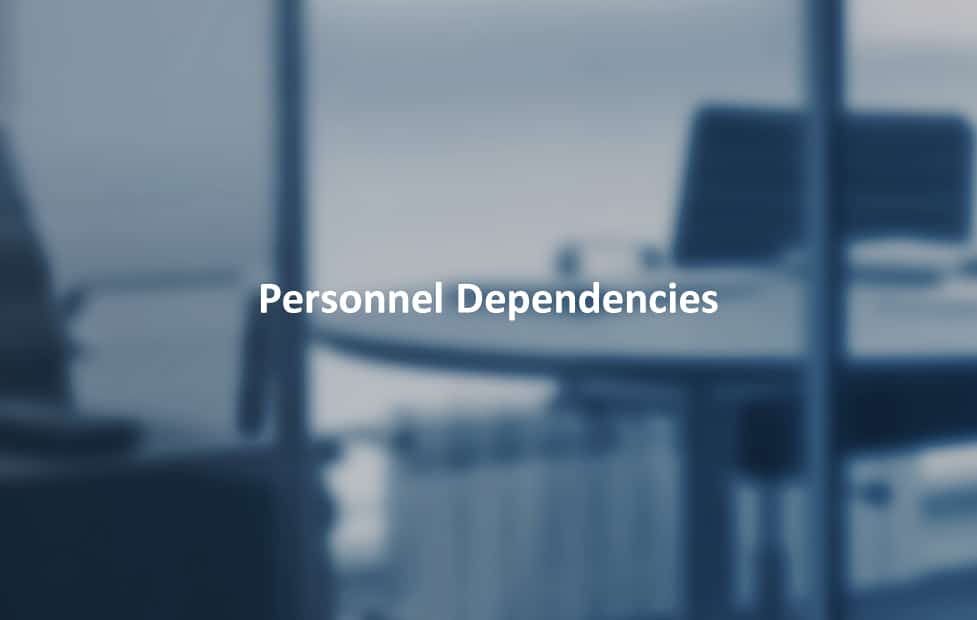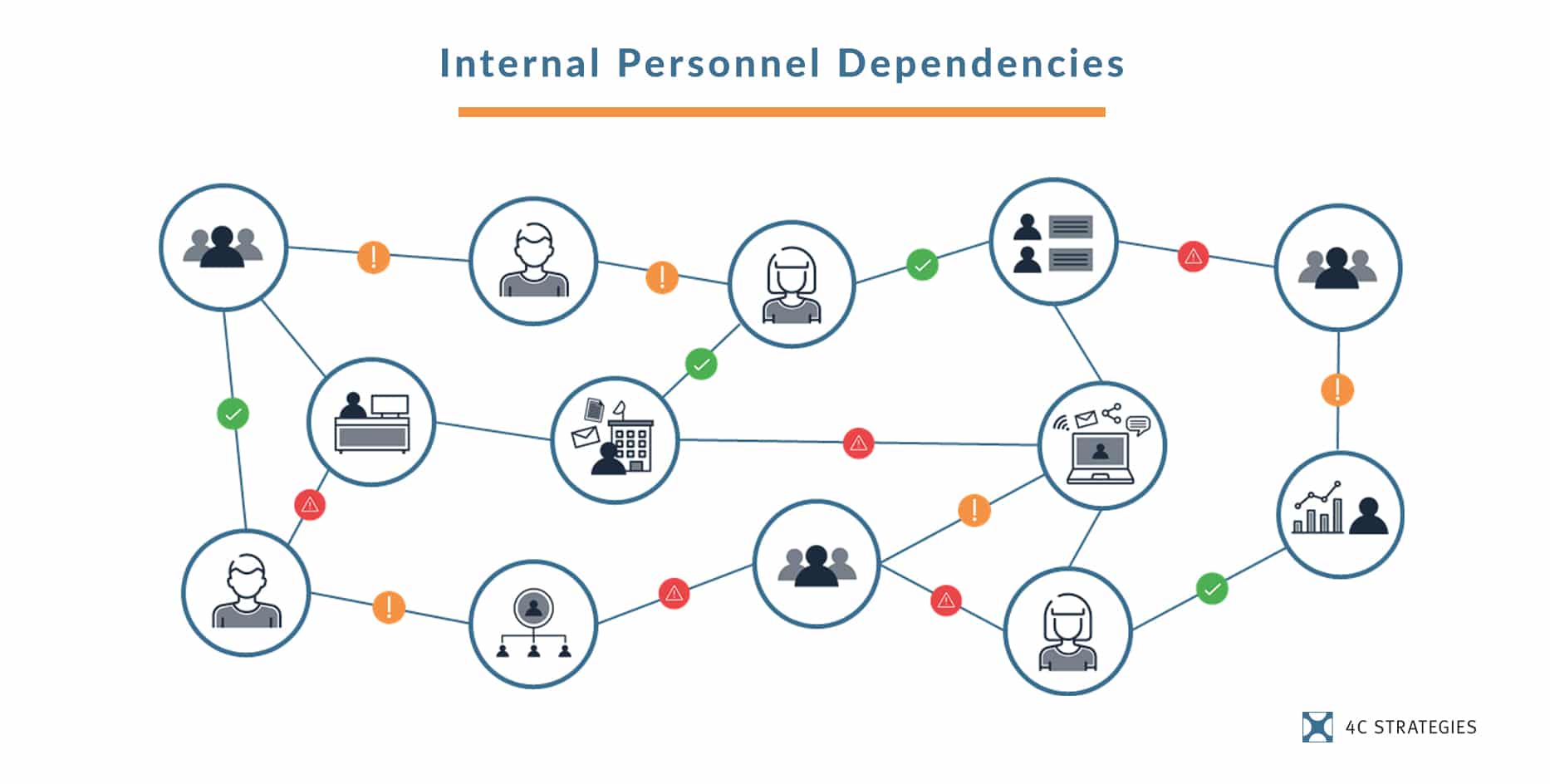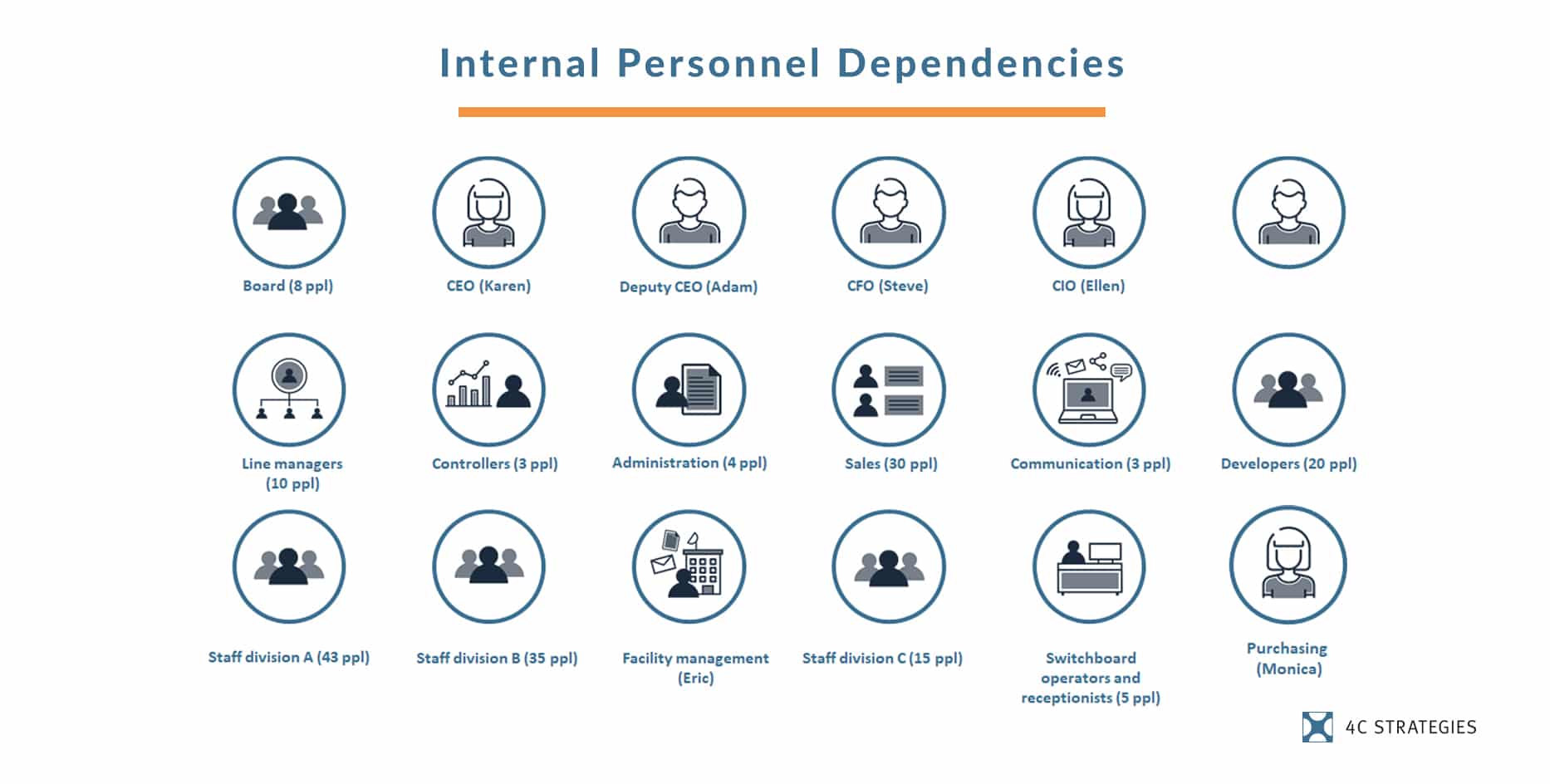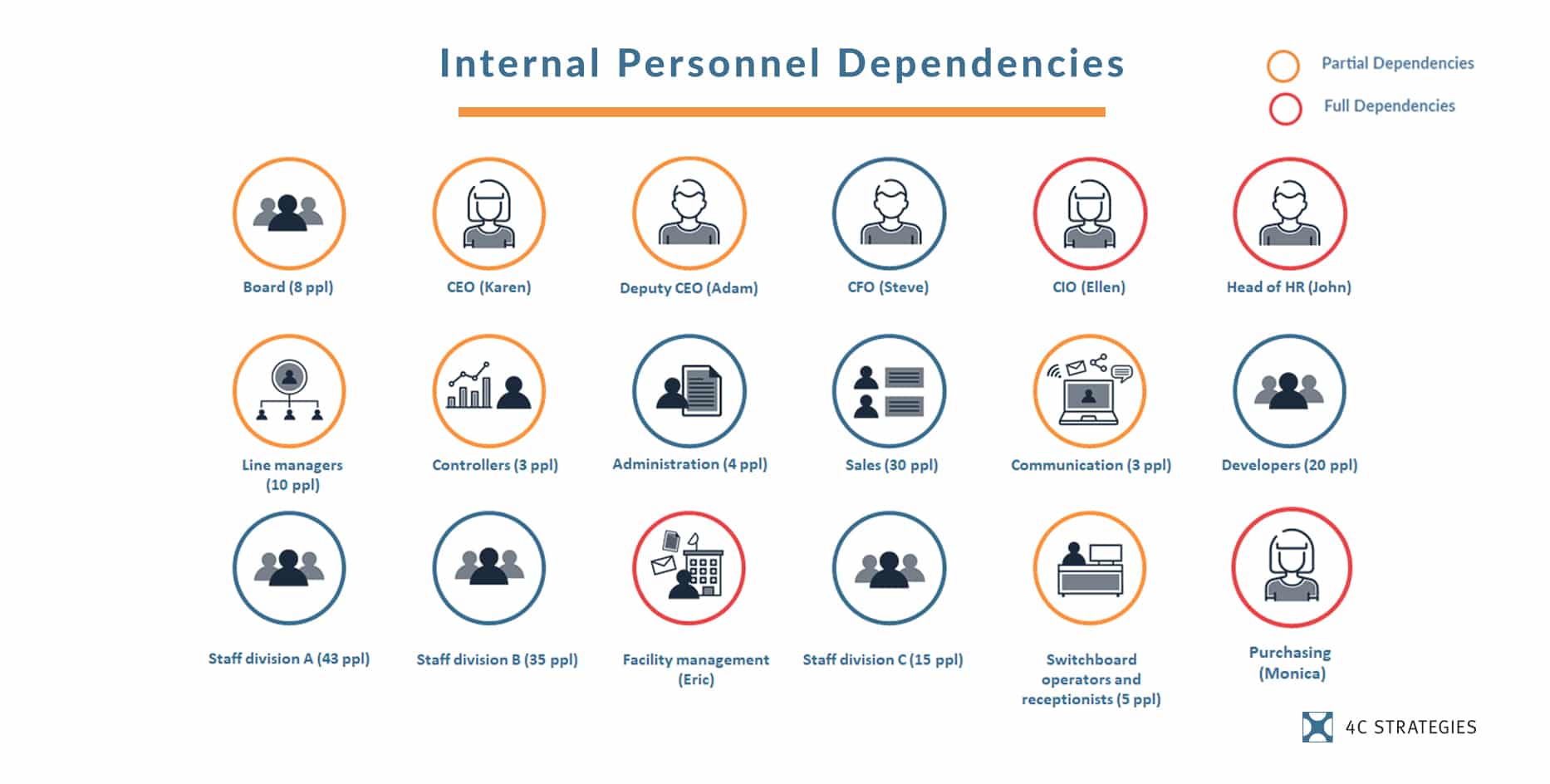This website uses cookies so that we can provide you with the best user experience possible. Cookie information is stored in your browser and performs functions such as recognising you when you return to our website and helping our team to understand which sections of the website you find most interesting and useful.
Preparation & Planning for Personnel Continuity during COVID-19

It can be hard to predict how many staff, and which key personnel, will be absent during the coronavirus pandemic. Based on the likely trajectory of the situation and our own analysis, we are planning for personnel absence of between 20-40% during a four to six-week period. It is important to separate dependencies on key individuals and general personnel. Key personnel absence cannot be measured in percentages in your Business Impact Analysis.
1. Focus your work on sustaining mission-critical activities at a tolerable level.
Not all activities are critical for your core business operations. Often, these activities can become less important and thus less prioritised depending on the circumstances. It is also important to consider what loss of operations the company can tolerate. We are not striving for operational excellence at this time.
By focusing on what is most important for the organisation to sustain, staff and resources can be allocated from less critical activities to where they are most needed.
Specific tasks to handle the repercussions of COVID-19 may have arisen. These must also be prioritised.

2. Identify the groups of personnel and key individuals that are critical to sustain mission-critical activities.
Organisations usually have internal and external critical personnel dependencies. Internal personnel dependencies are employees of the organisation. External personnel dependencies include personnel from staffing agencies, security companies, outsourced switchboard operators and subcontractors.
Focus on personnel dependencies that are critical to sustain your mission-critical activities. Other personnel are in this type of situation a valuable resource to reallocate when needed.
Personnel dependencies are often analysed in relation to critical activities. There can be times when an organisation’s critical activities are very similar and it is more efficient to make an aggregated impact analysis.
Image: Example of personnel categories and key personnel / functions

It is important to identify both groups of personnel and key individuals. Key individuals might be a senior manager, as well as a quality controller or an office manager. Focus on whether there are critical tasks that only one or very few employees can perform.
Certain groups of personnel and key individuals may be important for more than one mission critical activity. The mapping should be specific, e.g. by naming those key individuals.
3. Analyse the consequences of personnel absence, identify possible redundancies, and develop continuity plans.
The final step is to analyse the consequences of loss of critical personnel resources, identify possible redundancies and to develop continuity plans.
The analysis of loss of percentage of groups of personnel and key individuals are two separate processes. For groups of personnel, organisations can either analyse potential consequences using different variables, e.g. 20- 40 percent absence of staff or short-term and long-term (for example 2 weeks/6 weeks). They can also identify the minimum levels of staffing needed to maintain critical activities.
Regarding key personnel, examine whether it is a full or partial dependency (does a single person or a few individuals have a specific competence?). Organisations should also examine the consequences from absence of each key individual from a short-term and long-term (e.g. 2 weeks/6 weeks) perspective. Please bear in mind that all organisations have key personnel dependencies.
Image: Example of personnel dependencies – full and partial dependencies

Finally, organisations should consider possible alternative solutions/redundancies and update existing continuity plans (if applicable). This includes assessing if staff can be moved within the organisation and if the competencies of key personnel can be transferred to other employees. Review possible agreements with staffing agencies, and assess whether there will be competition to get resources from staffing agencies (i.e. do other organisations have agreements similar to yours?).
If there are no alternative plans, measures should be taken. Organisations should also write simple continuity plans that state how those measures should be applied and activated. To remain effective, continuity plans should be up-to-date and communicated to your organisation.
Final advice on personnel continuity
- Knowledge about possible alternative solutions/redundancies probably already exists within the organisation.
- Acceptable is good enough. This work doesn’t have to be perfect or of the same quality that the organisation is used to.
- Think creatively! Can resources be shared with other organisations? Is it possible to re-employ retired colleagues (if not in a high-risk group) or a substitute?
- The alternative solution must not duplicate regular operations. For instance, tasks of key personnel could be shared between several people.
- Focus on upholding critical operations. This could demand an agile and evolving approach, e.g. a temporary reorganisation.
- Investment in training and introduction is often needed when reallocating staff to ensure acceptable quality.
- Consider staffing agencies and other existing partners, such as IT suppliers, law firms, revision firms, consultancies etc. as possible extra resources that could be used on short notice since they are already familiar with your organisation.
Read more about continuity management and COVID-19 or about our full continuity management offering. You also find our collected material regarding the COVID-19 pandemic response here.
We hope these resources will be helpful to you and your organisation. 4C Strategies is ready to assist with any queries or specific needs as the situation evolves
COVID-19 Business Continuity Downloads
Business Continuity Plan for Personnel Dependencies
Download resource
Coronavirus Response
Get in touch to speak to a risk management expert about mitigating the impact of COVID-19.

